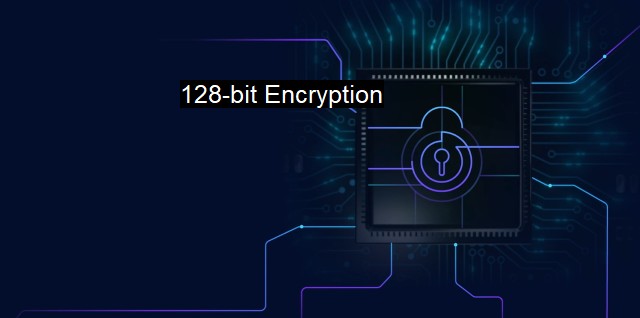What is 128-bit Encryption?
Ensuring Data Security: Understanding 128-Bit Encryption and Its Benefits in a Digital World
128-bit encryption is a form of advanced secure data transformation popular in the realm of cybersecurity and antivirus programs. This encryption technique protects communications, transactions, and identifiable personal information by coding the data into a complex and secure form that makes it extremely challenging for unauthorized and unintended individuals, including hacking entities, to access and decode. This system separates distinct bits of data into blocks, each of 128 bits - a byte is around 8 bits. Data in this form enhances the protection measures employed by cybersecurity and antivirus software, fortifying the strength of the systems significantly.From meetings organised by corporations to simple interactions among individuals, our interactions become increasingly virtual and online-driven. While this is an immense convenience, it makes securing our information essential in order to protect confidentiality and maintain smooth communication and data transfer operations. 128-bit encryption serves as one of these data protection measures.
Understanding some intricacies of encryption is vital to analyse how this benefits cybersecurity and antivirus applications. Encryption works by transforming a readable piece of information, called clear-text, applying complicated mathematical formulae, known as algorithms, and creating an output called cipher-text which is arduously and almost impossible to read without the suitable decryption key.
In "128-bit encryption", the "128-bit" concept demystifies entire simplicity. it is a key, technically considered encryption standard reflecting the respective key's length which commonly relates directly to the encryption's overall strength. A 128-bit encryption suggests a cryptographic key constituting 128 binary units. Since encryption keys operate off binary numbers involving permutations of '0's and '1's, this implies the key has 2^128 possible combinations.
This sheer abundance of potential keys provides a significant layer of security, as attempting to crack the encryption by attempting every potential key – a so-called 'brute-force attack' – would require enormous resources, processing power, and time beyond traditional computational capacities available. Consequently, it defends within the heart of cybersecurity techniques against confidential information theft, making it a choice standard for companies globally.
Antivirus programs often apply 128-bit encryption to progress their defensive mechanisms. Antivirus software essentially operates by identifying potential security threats like viruses or malware, isolating them, and extracting them from the system. Throughout this process, one crucial aspect remains maintaining the confidentiality and integrity of an individual's personal and system data. Safeguarding the data transmission is equally essential to avoid external interveners seizing control of or damaging the information during this transmission phase.
This is where 128-bit encryption shines. It offers a sublime form of security through effective data covert making technology, which strongly defends against malware trying to access the encrypted data passing through. Although not flawless, it serves a robust measure to ensure confidentiality and data-integrity during the complete antivirus process is retained.
We experience a robust shield even in our day-to-day general browsing and internet use, through HTTPS SSL secure certificates. These drop down to 128-bit hidden keys when the connection encounters a security threat, safeguarding transmitted data from trespassing attackers while maintaining data safety under protocol terms.
The role of 128-bit encryption plays a vital and far-reaching impact in antivirus and cybersecurity. It depicts an amalgam of sophisticated formulas that encrypt essential and private data into multiple disordered digits, which decreases significantly decryption chances by even the stouter dividers. Therefore, recognizing the utility and power of encryption, and the strategically layered process essentially becomes an important base for grasping the dynamics of both cybersecurity and antivirus systems, facilitating better internet hygiene and usage manners by enforcing higher safety.

128-bit Encryption FAQs
What is 128-bit encryption?
128-bit encryption is a security measure used to protect electronic data by encoding it in a way that can only be read by someone who has the encryption key. It is a highly secure method of protecting sensitive information such as passwords, financial information, and personal data.How does 128-bit encryption work?
128-bit encryption is based on complex mathematical algorithms that scramble the data in such a way that it can only be read by someone who has the secret key to unscramble it. The encryption key is created using a combination of random numbers and characters, making it nearly impossible for anyone to guess it.Why is 128-bit encryption considered more secure than lower levels of encryption?
128-bit encryption is considered more secure than lower levels of encryption because there are exponentially more possible encryption combinations with a 128-bit key. This makes it much more difficult for hackers to break the encryption and gain access to sensitive information.What types of data should be encrypted using 128-bit encryption?
Sensitive data such as passwords, financial information, and personal data should be encrypted using 128-bit encryption. This includes any data that could be used to steal someone's identity, compromise their finances or damage their reputation. It is important to use strong encryption methods such as 128-bit encryption to ensure that this information is kept safe from hackers and other cybercriminals.| | A | | | B | | | C | | | D | | | E | | | F | | | G | | | H | | | I | | | J | | | K | | | L | | | M | |
| | N | | | O | | | P | | | Q | | | R | | | S | | | T | | | U | | | V | | | W | | | X | | | Y | | | Z | |
| | 1 | | | 2 | | | 3 | | | 4 | | | 7 | | | 8 | | |||||||